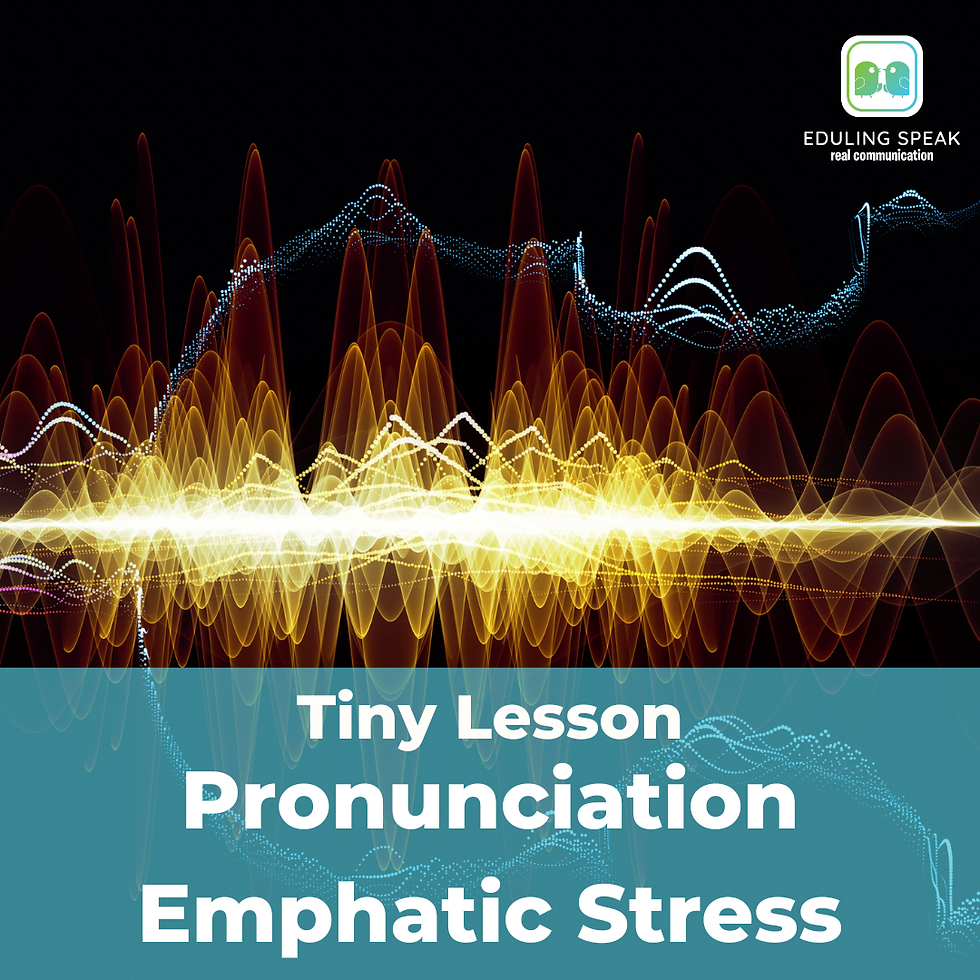By Dr. Linh Phung, Eduling

Most students when learning English want to “perfect” their pronunciation, and some have the goal of sounding like native speakers. However, it has been observed that the researching and teaching of pronunciation have been mostly sidelined and haven’t received as much attention as grammar and vocabulary.
Recently, I’ve noticed that there has been a stronger argument for teachers to consider pronunciation more systematically. However, just like grammar and vocabulary, systematic integration of pronunciation features does not mean teaching isolated features (sounds and suprasegmental features). These features still need to be taught in contextualized language use, not only drilling at the word and sentence levels. In a presentation that I attended at the TESOL International Convention in Portland in March 2023, Di Liu from Temple University suggests that we should treat learners’ pronunciation as an emergent and dynamic system and focus on helping students to improve the whole system and subsystems. He illustrates how teachers can use ChatGPT to generate pronunciation teaching materials based on students’ needs. This is a great idea, but I don’t know what the recommendation is beyond generating materials.
This actually reminds me of the idea to use tasks to teach pronunciation because focused tasks can target certain pronunciation features (See the 2017 special issue on task-based pronunciation teaching in the Journal of Studies in Second Language Acquisition). Theoretically, the teaching of pronunciation in this way will be in the context of meaningful language use.
I recently read an Oxford University Press position paper on teaching pronunciation within the English as an International Language (EIL) framework. The suggestion is to integrate pronunciation teaching in teaching speaking, listening, and even reading. Learners can be trained to distinguish different sounds and pronunciation features and focus on learning to pronounce features that are important for international communication. The goal is international intelligibility. For those who aim at native-like pronunciation, they can work on adding “native speaker accent.” One of the most helpful suggestions from the position paper is what features are important and unimportant for international intelligibly.
Important features include: most consonant sounds (except for acceptable variants), vowel length, vowel quality (although L1-influenced vowel qualities are acceptable as long as they are consistent), sentence stress, and word stress. Consonant clusters are important at the beginning or in the middle of words, but may not be important at the end of words. Vowel reduction, use of schwa and weak forms, assimilation of sounds, elision, and coalesce are unhelpful to intelligibility. They, however, can be taught for receptive (listening) purposes. Stress-timed rhythm and pitch movements are not important. This really gives me an idea about what to focus on.
At the practical level, I think we can:
Offer corrective feedback when students make errors (as usual). I think most students appreciate this correction.
Focus on teaching students bottom-up listening skills related to sound processing apart from top-down skills. Some activities related to minimal pairs (p/b, r/l, iy/i, …) may be helpful, here’s my article about minimal pairs.
Offer mini or tiny lessons (as I call them) in your class when issues come up.
Offer or suggest technology-based intervention so that learners can practice pronunciation features systematically while having the flexibility and convenience of using their own device. There are quite a few good apps focusing on this already.

My app Eduling Speak doesn’t really focus on pronunciation at this point but offers tiny lessons (currently 10) for users to choose to listen to on their own. The app offers input-based tasks and communicative tasks that students can complete in pairs to develop their speaking and other language skills. It’s available on the App Store and Google Play if you’re interested.
Develop tasks targeting pronunciation features. I plan to add these to my app.
Offer intensive coaching to those who want it
What’s your experience? What are your thoughts?
Bio: Dr. Linh Phung has over 15 experience teaching English in the US and other countries. She's the Founder of Eduling and has recently released the Eduling Speak app. She's published in a variety of journals in English language teaching and international education. She's also a book author with three published books: Tug of Words (a picture book), IELTS Speaking Part 2, and Studying in English: Strategies for Success in Higher Education.




Comments